No matter how durable, beautiful and functional ceramic hob, if you use a dish that is not suitable for it. she can:
- Cover with hardly removable or completely indelible stains;
- Cook more slowly, and therefore increase power consumption;
- Get scratched.
To avoid unnecessary troubles and cleaning problems, make sure that you use the correct pans and pots.
4 requirements for dishes
Below are 4 important features that the glassware for a glass-ceramic cooker must meet:
1. Suitable material
What kind of dishes can be used for a glass-ceramic hob depends on the type of its heating element. A standard stove has conventional heaters (spiral / ribbon), and an induction one has induction coils, which do not heat the “hob” itself, but only the bottom of the cookware.
Due to the principle of their work, induction plates are compatible only with stainless steel and cast iron dishes or with a special ferromagnetic bottom (the walls of the container can be made of any material). If the bottom of the pot or pan does not have magnetic properties, then the stove simply will not turn on.
But for a standard glass-ceramic cooktops any utensils with a flat bottom are suitable. However, some materials are undesirable.
But not so simple. It turns out that for an induction cooker it is not at all necessary to buy “special” dishes, and for a conventional glass-ceramic panel, on the contrary, you may have to buy a couple of pans and pots. Understand the question will help the following tablet (if you look at the table on the smartphone, turn it to a horizontal position - so the whole table will enter the screen area).
What kind of dishes can be used for ...
| NORMAL glass-ceramic surface | Induction hob | ||
|---|---|---|---|
| Is like | Not recommended | Fits | NOT suitable |
| Stainless Steel Cookware | Aluminum dishes (leaves traces, can bend and slowly heats up) | Any dishes with ferromagnetic bottom | Aluminum cookware |
| From titanium | Copper (leaves traces) | Stainless steel | Copper |
| Cast iron (as smooth as possible) | Enamelware (it is undesirable to use it, as the enamel can leave indelible traces of heat) | From cast iron | Heat resistant glass |
| Carbon steel | From heat-resistant glass (it heats up very slowly, which means it increases power consumption) | From titanium | From ceramics |
| Anodized aluminum | Ceramic (due to poor thermal conductivity and coarse bottom, which may scratch the glass ceramic plate) | Carbon steel | |
| Aluminum with ceramic / teflon coating or steel bottom | Any dishes without a magnetic bottom can be used through an adapter - adapter disk, on which you can put "forbidden" dishes | ||
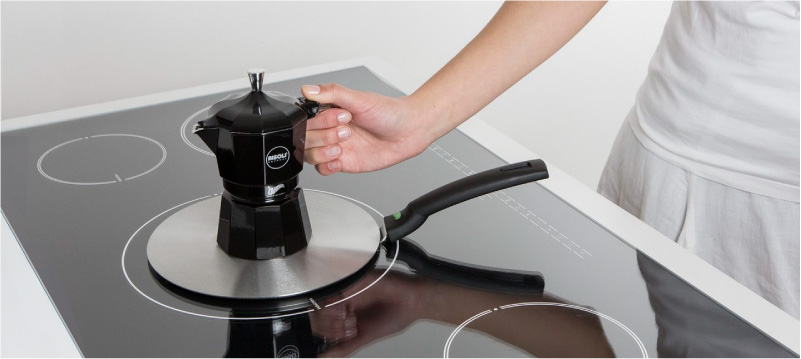
Adapter for induction cooker allows you to cook in any dish
Our advice:
- How to determine if this or that pan / pan fits the induction hob? Just attach a magnet to its bottom - if it is magnetised, then it fits.
- When choosing dishes for a glass-ceramic stove, be sure to pay attention to the labeling (on the outside of the bottom of the dish). Special badges will tell you whether the selected item is compatible with your hob.
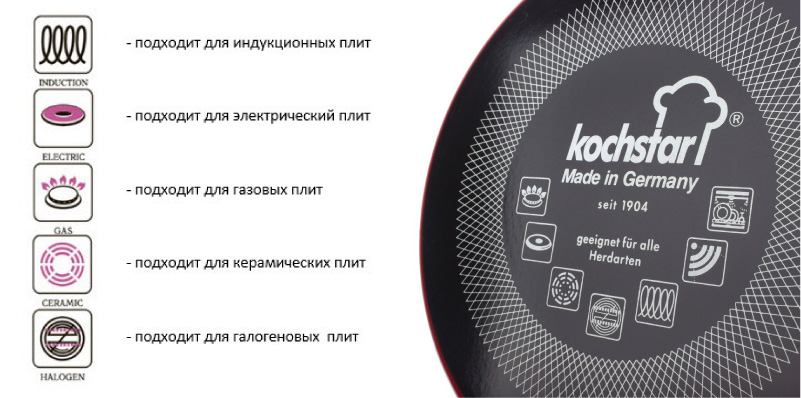
It often happens that externally dishes seem “forbidden”, but in fact it can be used for standard / induction glass ceramics
- It is possible and necessary to use dishes from cast iron, but with care (for any electric stove). First, cast iron is rough and can scratch glass ceramics. Secondly, it is heavy, which means that one careless movement can turn into a plate crack. Thirdly, because of its ability to hold heat for a long time and transfer it back to the stove, it can overheat and turn off.
- Another clarification about enameled pans. Yes, most of these dishes leave marks on glass-ceramic, which are very difficult to remove. However, there are exceptions - this is enamelware with a special badge “For a glass-ceramic stove” or “For an induction stove” as in the photo below.
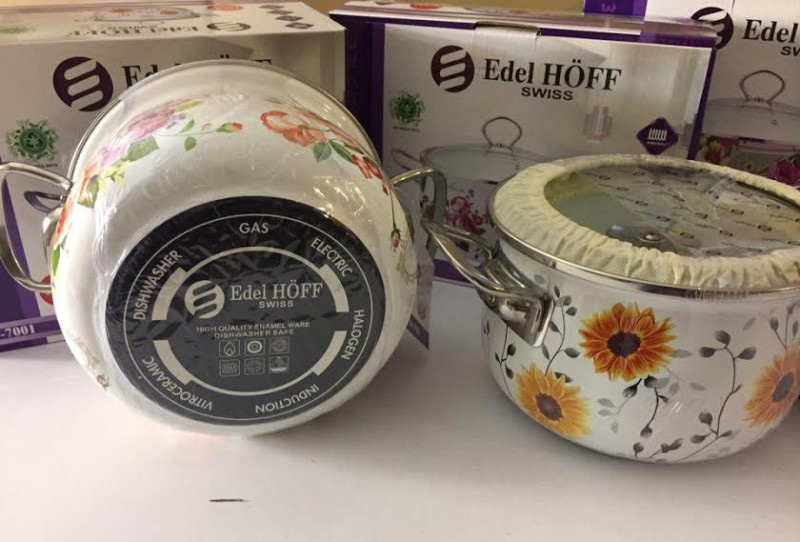
Enamelware for induction glass ceramic hob
2. Flat bottom
Unlike gas stove A flat glass-ceramic panel distributes heat only over the surface that is in direct contact with the heating zone. Therefore, dishes for such a plate should have a flat bottom without any burrs or relief.
- A curved, grooved or “crumpled” bottom will heat up unevenly, thereby increasing cooking time and power consumption.
- Unfortunately, the bottom of the dishes used for cooking on a gas stove or an ordinary electric stove with "pancakes", most often is slightly deformed and bent. Therefore, buying a new glass-ceramic hob, be prepared to revise the old utensils.
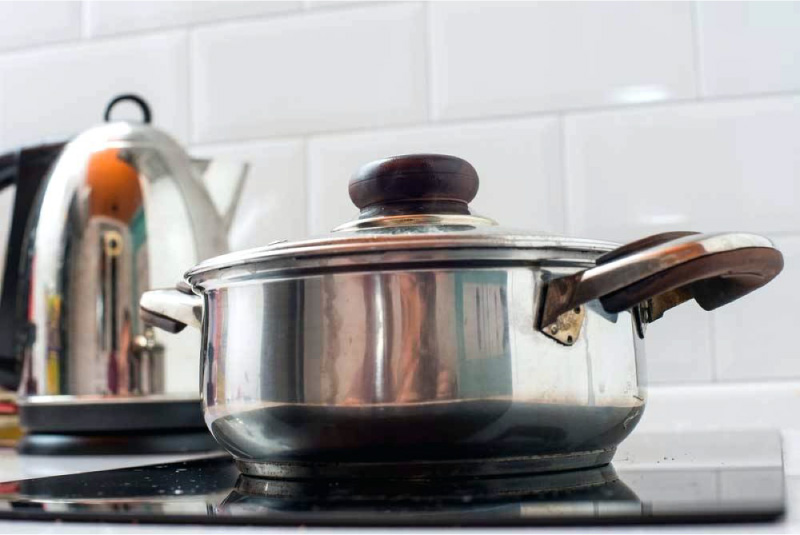
Only flat bottom dishes ensure efficient heat transfer.
- The induction cooker can quickly heat up the dishes with a grooved bottom, however, due to the relief, it can crackle during cooking.
3. Suitable size
In order for food to be cooked as quickly as possible, the size of the pan or frying pan must match the size of the hob.
- The bottom of the dishes should be a little less, equal to or slightly larger than a ring.
- For an induction hob, the bottom diameter should be at least 8-12 cm. Keep this in mind when choosing a coffee Turkish or, say, a geyser coffee maker.
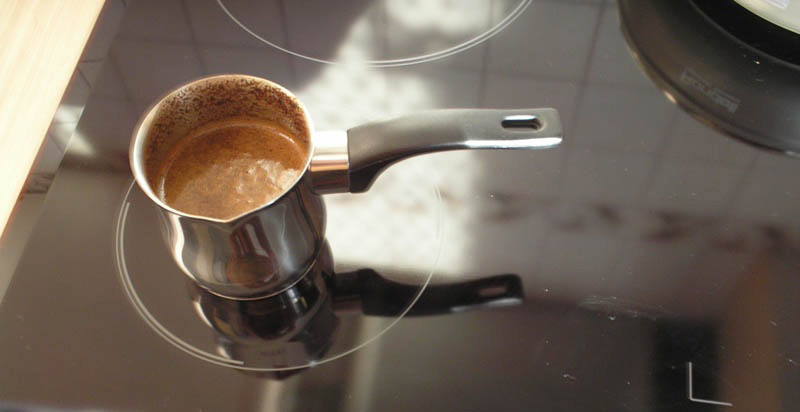
Turk for induction cooker
For this reason, classic cauldrons and round bottom wok frying pans are not suitable for use on a glass-ceramic panel. You need to look for models that are specially adapted for electric stoves and have a flat base.
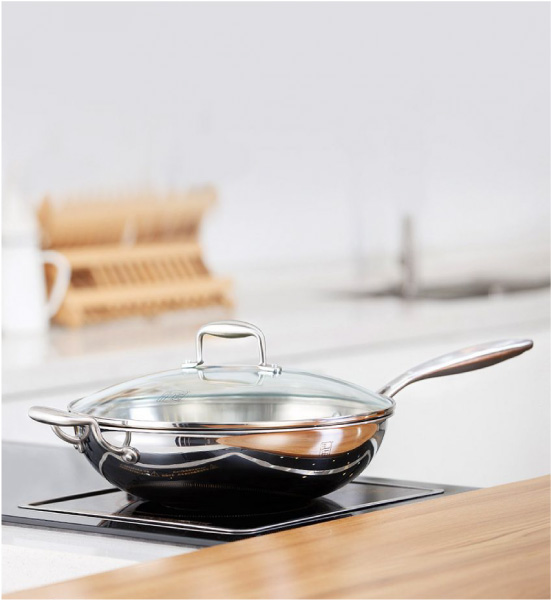
Flat wok pan
4. Severity or thickened bottom
Cookware, which has a heavy and thick base, is best suited for glass-ceramic plates. Firstly, it is securely held on the burner during cooking, and secondly, it provides better contact with the surface, which means it heats up faster and retains heat better. However, buying very heavy dishes is also not worth it - it increases the chance to break glass-ceramic by carelessness and, moreover, it is simply not convenient.
Some more tips on choosing dishes for glass-ceramic (including induction cookers)
Whichever glass-ceramic stove you have, induction or standard, it should be used carefully so that you do not accidentally drop utensils on it or scratch it, moving it from place to place. Therefore, when choosing your pans, pots, ducklings, cauldrons and stewpots, remember the following recommendations:
- All fastenings on the handles of dishes should be reliable, ideally bolted and not welded.
- It is advisable that the handles of the utensils have heat protection to minimize the risk of burns.
- Also, containers should be stable and suitable for the size of the cover.
- if you to buy a new hob, but because of your favorite collection of dishes, you still doubt which stove is better to choose, we advise you to think about combined stoves with conventional and induction heating zones.
- Guide to the choice of a universal knife and "kitchen trio"
- Guide to choosing a good universal pan
- The choice of pans for universal use: a comparison of 7 types, 6 tips and 1 video
- How to clean the pan outside and inside - 8 simple ways for difficult cases
- How to sharpen a kitchen knife - 7 steps for beginners

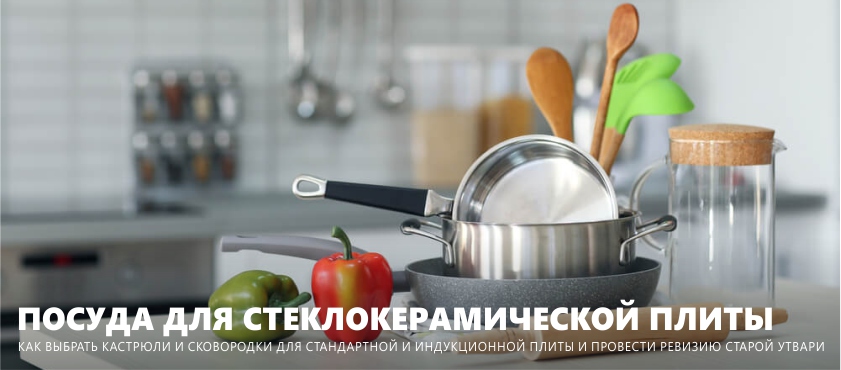

 (Rate the material! Already voted:6 average rating: 4,83 from 5)
(Rate the material! Already voted:6 average rating: 4,83 from 5)